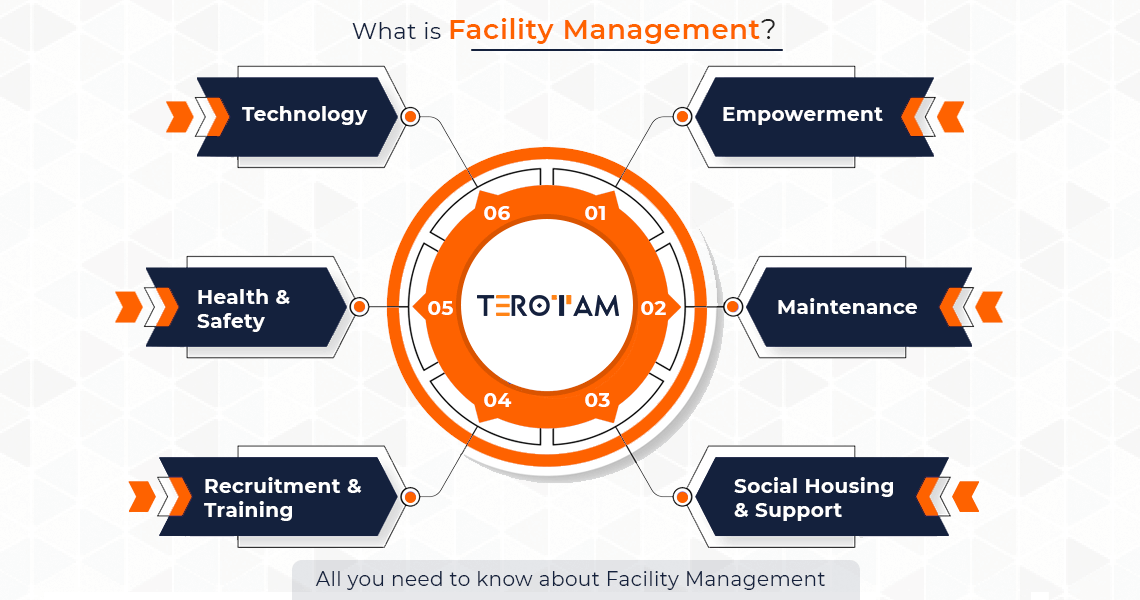The Necessary Overview to Center Monitoring: Strategies for Success
Center management plays an important duty in the overall success of a company, offering as the foundation that supports performance, safety and security, and efficiency. The nuances of efficient center monitoring expand past plain logistics and call for a comprehensive understanding of both quantitative and qualitative metrics.
Comprehending Facility Administration
What makes up efficient facility management? Effective facility management encompasses the coordination of various organizational features to make certain that constructed settings are secure, reliable, and helpful to performance. It incorporates the principles of style, company, and engineering monitoring to produce a seamless operational flow within an organization.
Trick elements of facility administration include area preparation, upkeep monitoring, and compliance with health and wellness guidelines. Area preparation concentrates on maximizing making use of physical resources to support organizational goals, while maintenance management guarantees that facilities are kept in ideal condition, making best use of life-span and reducing operational costs. Compliance with regulatory and legal standards is essential, as it safeguards the organization against potential liabilities and enhances its reputation.
Furthermore, effective facility monitoring depends on the critical usage of modern technology, such as Structure Administration Solution (BMS) and Computer-Aided Facility Administration (CAFM) tools. These innovations help with real-time tracking of building systems and streamline maintenance procedures (Facility Management). Inevitably, a comprehensive method to facility management not only advertises functional effectiveness yet likewise promotes a positive setting for site visitors and workers alike, driving general organizational success

Key Methods for Optimization
Maximizing facility monitoring calls for a tactical technique that straightens operational exercise with business purposes. To attain this, the first crucial approach is the implementation of integrated technological options. Making use of advanced software application systems permits real-time surveillance of center operations, helping with data-driven decision-making and boosting total performance.
Secondly, regular assessments of center efficiency are necessary. Performing regular examinations and audits enables center supervisors to recognize locations that require renovation, making certain that sources are allocated effectively. This proactive approach helps in minimizing downtime and enhancing service distribution.
Another essential strategy is promoting partnership across departments. By encouraging open interaction in between groups, center managers can better straighten their approaches with organization objectives, causing enhanced operational synergy. In addition, involving team in training programs promotes a culture of accountability and boosts their capability to contribute to optimization efforts.
Enhancing Safety And Security Procedures
Enhancing safety and security procedures is essential for developing a protected environment within facilities. A comprehensive safety and security procedure not only shields site visitors and workers yet likewise enhances functional efficiency. Facility Management. To attain this, facility supervisors should conduct routine risk evaluations to identify prospective hazards and make sure that suitable actions are in area

Furthermore, clear he said interaction channels should be established to report safety concerns promptly. This includes developing an accessible system for staff members to articulate prospective risks or incidents without fear of reprisal. Additionally, leveraging technology can boost safety and security actions; as an example, executing surveillance systems and access controls aids keep an eye on facility activities and limit unauthorized entrance.
Finally, compliance with neighborhood guidelines and industry criteria is non-negotiable. Routine audits and reviews of safety and security procedures ensure placement with current regulations and finest techniques. By prioritizing these approaches, center managers can cultivate a society of security that shields all stakeholders and eventually adds to the organization's success.
Improving Workplace Atmosphere
A favorable workplace setting considerably boosts employee spirits and productivity, making it an important focus for facility monitoring. To create such a setting, facility managers need to prioritize a number of vital aspects, consisting of ergonomics, appearances, and employee interaction.
Ergonomic factors to consider are important to lessen physical pressure and discomfort. This includes giving adjustable furniture, appropriate lights, and adequate room for movement. These adjustments can cause minimized absence and increased task contentment.
Aesthetics play an important function fit the work environment ambience. Making use of color psychology, natural lighting, and greenery can promote a inviting and promoting setting. Attentively designed spaces can boost creativity and improve content general well-being.
Furthermore, motivating employee engagement through inclusive decision-making processes can enhance the sense of ownership and belonging. Gathering feedback on office improvements and including workers in the design process can result in a more customized setting that fulfills their requirements.
Finally, promoting health campaigns, such as health cares and relaxation rooms, can better add to a helpful workplace society. By concentrating on these techniques, facility supervisors can efficiently improve the office atmosphere, driving both employee contentment and business success.
Measuring Success in Facilities
Gauging success in facility management calls for an extensive approach that reviews both qualitative and measurable metrics. Quantitative metrics generally consist of essential efficiency signs (KPIs) such as room use rates, power consumption, upkeep costs, and occupancy degrees. These metrics offer a clear picture get more of operational performance and monetary efficiency, allowing center managers to determine locations for enhancement and standard against market standards.
Qualitative metrics, on the other hand, emphasis on user fulfillment and employee interaction. Studies and feedback devices can evaluate exactly how well the centers meet the requirements of occupants, assisting to analyze the overall workplace setting. This aspect is important, as a completely satisfied workforce is typically connected to increased productivity and retention prices.
To properly measure success, center managers ought to likewise take into consideration incorporating technology, such as developing administration systems and information analytics devices, to accumulate and analyze appropriate data. Regularly examining both collections of metrics permits for an extra well balanced view of performance and informs tactical decisions. Eventually, a successful facility administration method rests on a dedication to constant enhancement, making certain that both functional performances and customer contentment are focused on.

Verdict
In verdict, efficient center administration is essential for boosting organizational performance. By applying integrated technical options, conducting routine assessments, and cultivating partnership throughout departments, companies can achieve optimum resource allocation and functional efficiency. Focusing on safety methods and improving work environment environments additionally add to boosted staff member complete satisfaction. Ultimately, determining success via both quantitative and qualitative metrics permits constant renovation, ultimately causing reduced operational prices and a more efficient business atmosphere.
Center management plays a crucial function in the general success of an organization, serving as the backbone that supports safety, performance, and effectiveness.Trick components of center management include room planning, upkeep management, and compliance with health and safety laws.Additionally, efficient center monitoring counts on the tactical usage of technology, such as Structure Management Systems (BMS) and Computer-Aided Facility Administration (CAFM) devices. Inevitably, a detailed approach to center management not only promotes operational effectiveness but likewise promotes a favorable atmosphere for site visitors and workers alike, driving general business success.
Eventually, a successful facility administration method pivots on a dedication to continuous renovation, making certain that both functional efficiencies and individual complete satisfaction are prioritized.